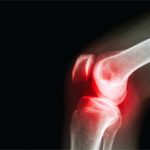NEW YORK (Reuters Health)—In patients with knee osteoarthritis (OA), telehealth-delivered exercise and diet programs are superior to electronic health information for reducing pain and improving function, although the contribution of diet is modest, a randomized trial shows.1
“This research provides evidence from a large clinical trial to help tease out how much benefit dietary weight loss provides for key outcomes for people with knee osteoarthritis, over and above that of exercise,” Dr. Kim Bennell of the University of Melbourne tells Reuters Health by email.
“Given that our participants had private health insurance, were relatively well educated and volunteered to participate in the study, it is possible that they were already motivated and willing to improve their health, including their knee problem, and engage in the program,” she says.
“As such,” she says, “our results may not necessarily be generalizable to those who are less motivated to do something about their knee pain. However, we believe that this would be broadly reflective of the ‘real-life’ implementation of such a program where only people seeking care for their knee problem would sign up.”
As reported in the Annals of Internal Medicine, Dr. Bennell and colleagues compared two six-month, telehealth-delivered exercise programs, one with and one without a dietary intervention, and a control group who received only electronic health information.1
Australian private health insurance members with symptomatic knee osteoarthritis and a body mass index between 28 and 40 kg/m2 participated. A total of 379 provided six-month outcomes and 372, 12-month outcomes. The mean age was 65, and about half of the participants in the intervention groups were women (67% in the control group).
The exercise program included six videoconferencing consultations with a physical therapist for exercise, self-management advice, and behavioral counseling, plus equipment and resources.
The diet and exercise program included an additional six dietitian consultations for a ketogenic very-low-calorie diet followed by a transition to healthy eating, as well as nutrition and behavioral resources.
The primary outcomes were changes in knee pain on a numerical rating scale (NRS) of 0 to 10 (higher indicating worse) and physical function on the Western Ontario and McMaster Universities Osteoarthritis Index (WOMAC) scale, (0 to 68, higher indicating worse) at six (primary) and 12 months.
At six months, both programs were superior to control for pain. Between-group mean differences in the change on NRS for diet and exercise was -1.5 and for exercise alone, – 0.8. Both programs were also better on functional measures, with between-group mean differences in the change on the WOMAC for diet and exercise, – 9.8 and exercise alone, -7.0.


